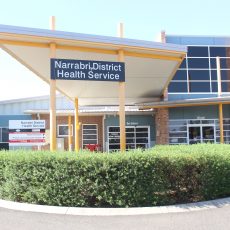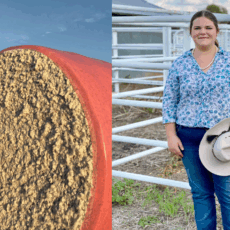University of Sydney Plant Breeding Institute’s (PBI) Rebecca Thistlethwaite took out a top five spot in the ABC Media Residency Program, among some of the best and brightest in sciences, humanities, and the arts.
In September, Dr Thistlethwaite travelled to the ABC Ultimo offices in Sydney to participate in the program presented by ABC Radio National, in partnership with the Australian National Centre for Public Awareness and the Australian National University.
The program gave emerging researchers in humanities and science the chance to learn media skills that would help communicate complex science and innovations in a way that can be understood by all Australians.
“I was immensely grateful for the opportunity,” said Dr Thistlethwaite.
“I take great pride in representing our institute and our vibrant Narrabri community.
“I’m constantly seeking the next challenge, and I strongly believe that improving the dialogue between industry and science is an area where researchers can make great strides.”
Based at the new PBI Centre for Crop and Digital Agriculture in Narrabri, Dr Thistlethwaite has been conducting research that focuses on improving the resilience of commercial food crops against challenging climatic conditions such as heat and drought stress.
A significant part of her role involves ensuring the relevance of the research to the Australian grains industry, which has been supported by the Grains Research and Development Corporation.
“I have dedicated the last decade to this field and have had the privilege of being mentored by growers and commercial plant breeders across Australia who have provided valuable insights into our research direction,” said Dr Thistlethwaite.
“What I find most fulfilling in my job is connecting industry with science to achieve the best future outcomes for growers and their families.”
After hearing about the program on the radio, Dr Thistlethwaite saw a valuable opportunity for the institute to improve the way it conveys often-complicated scientific concepts to a wider audience.
“I’ve always been committed to pushing my boundaries in this area,” said Dr Thistlethwaite.
“I’m learning to appreciate the subtleties of tailoring my communication to suit different audiences.
“Although it can be quite challenging for me at times, I’m discovering new and engaging ways to convey messages about the impact and recommendations that can enhance future food crop production.”
Dr Thistlethwaite expressed that effective science communication was not a one-way street, and involves finding common ground, actively listening to community concerns, and engaging in two-way dialogues.
“This approach helps establish trust and enables us to provide clear, accurate, and pertinent information to effectively address the challenges linked to communicating our plant breeding work to diverse communities.
“It’s paramount to be transparent about science’s limitations and uncertainties, fostering community trust in the process, especially when trying to broach subjects like global food security and climate change and the significance of plant breeding in these areas.
“Raising awareness about these critical issues becomes an integral part of our communication efforts.”
This is especially crucial for the role that communities play in rural and urban areas.
“In regional areas, such communication directly affects livelihoods, enabling growers and advisors to make informed decisions regarding crop choices, sustainable farming practices, and resilience against environmental challenges.”
“In city communities, consumers and urban residents play a significant role in shaping agricultural and environmental policies through their choices. Effective science communication also helps city dwellers understand the origins of their food and empowers them to support sustainable agriculture.
“It also encourages urban gardening, local food initiatives, and engagement with agricultural innovations.
“In both settings, science communication bridges the gap between scientific knowledge and the public, fostering informed choices, sustainable practices, and support for agricultural research and innovation.”
This is the first time that the research institute has had representation in the highly competitive, two-week residency program.
Dr Thistlethwaite and her fellow top five research colleagues participated in training and workshops in various aspects of science communication, including writing, broadcasting, and public speaking, things she found lacking in her own study curriculum.
“The majority of university science degrees allocate only a limited portion of their curriculum to the nuances of communication styles and engaging diverse audiences,” said Dr Thistlethwaite.
“This urgently needs to change if we aim to effectively connect with those affected by our research outcomes and inspire the next generation of agricultural science leaders.”
Dr Thistlethwaite felt that the program provided an opportunity to inspire and engage with people from all walks of life, fostering a deeper appreciation for the wonders of science and its impact on the world.
“The most valuable aspect of the experience was the opportunity to fully immerse in the ABC studio environment, where producers and hosts were readily accessible for conversations and generously offered advice,” said Dr Thistlethwaite.
“We had the chance to experience being both interviewee and interviewer in radio studios, including live on-air opportunities.
“During our time there, dedicated mentors guided us through the process of creating our own written and audio pieces for broadcast.
While the top five scientists were a diverse group, they shared a common theme; for their scientific work to make a real impact, which can only be achieved through mastering effective communication with a wider audience.
“We all felt a sense of responsibility as scientists to connect our research with the broader community and help increase awareness and transparency with the research,” said Dr Thistlethwaite.
“We all found this commitment to effective communication was integral in upholding the integrity of the science each of us conducted.”
To order photos from this page click here










